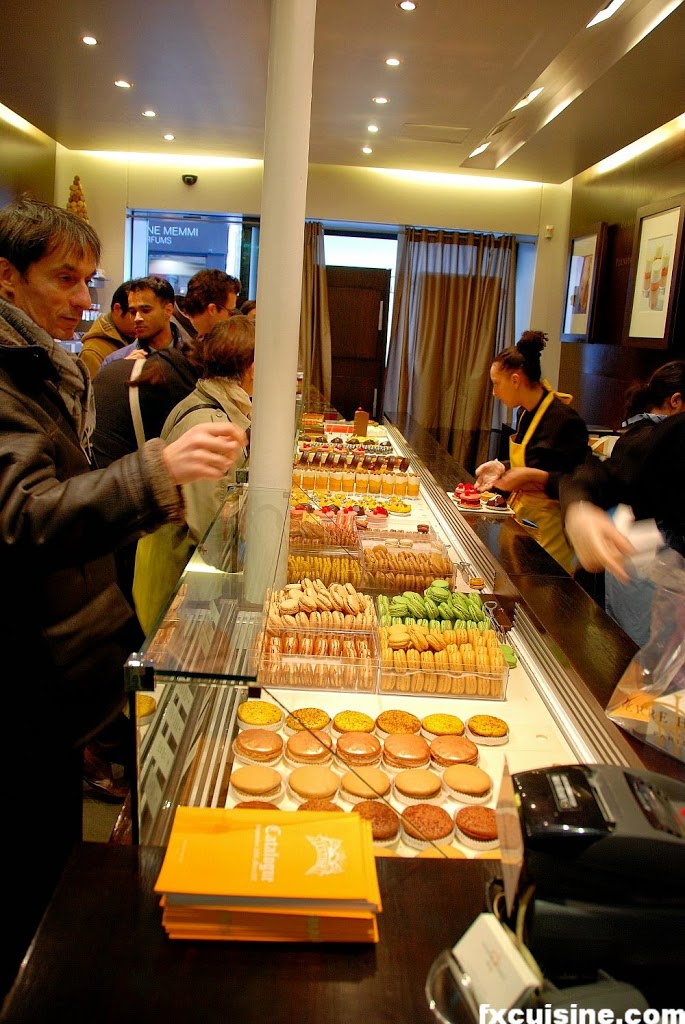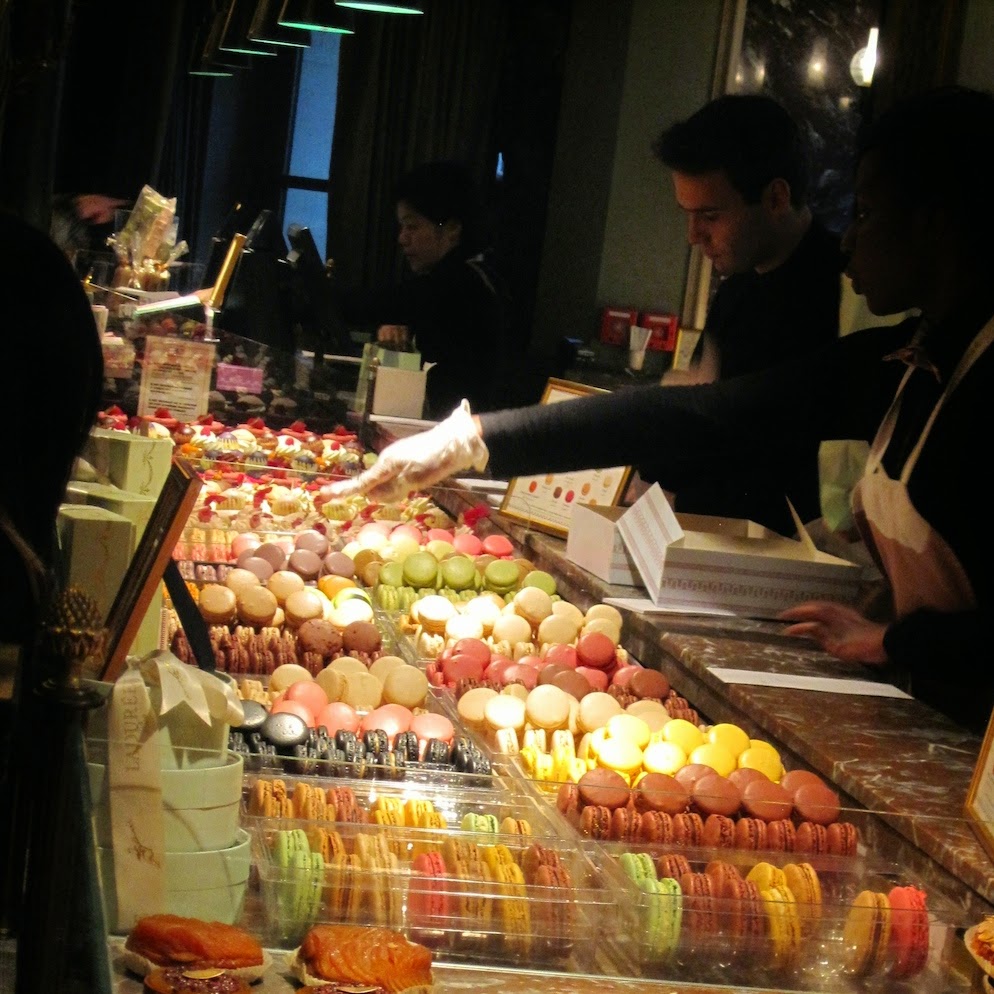For one of our school projects, we had to pick a research topic and write a report about it. I chose macarons and here is my report!
Macarons have been near and dear to my heart from the time we lived in Paris in the winter of 2013. Through all my research about Paris, macarons kept coming up and as such I was obsessed with them before I took my first bite. They did not disappoint, and I had to get one at almost every pastry shop we visited – and we visited a lot. They ranged in quality substantially, and my favorites were from the famous French tea salon Ladurée. When I found out we had to do a research topic for school, Ladurée was the first thing that came to mind, but I decided to look beyond the salon and into the history of the macaron and how it came to be.
When you hear the word macaron, you can’t help but think of a wonderfully elegant and delicious confection. Light and airy, crunchy and chewy, these delicate cookies have captivated the world and are continuing to grow in popularity. Don’t let the simple ingredients of almond flour, egg whites, and icing sugar fool you – making these properly takes practice, patience, and masterful technique.
Macarons consist of two almond meringue discs sandwiched together, usually with a ganache, buttercream, or even jam. Unlike most desserts, macarons need to age for up to three days before serving. The cookies are quite dry straight out of the oven, and need time for the filling to do its magic and make the cookies chewy. It’s almost impossible to resist diving right into one as soon as it’s made, but the longer it sits, the better it will be. The perfect macaron should have a crisp shell with a soft and chewy center.
Now predominantly a French confection, the Macaron is said to have originated in Italy and was brought to France by Catherine de’ Medici when she married Henry II in the mid-1500’s. The sweet little cookies didn’t begin to gain fame until the French Revolution in 1792, when two nuns baked and sold them to pay for their housing. At this time, the cookies were sold on their own, without filling. It would be over one hundred years before the world was introduced to the macaron we know today.
Established in 1862 by Louis Ernest Ladurée, the shop originally started out as a bakery at 16 Rue Royale in Paris. The area known as the Madeline district was quickly developing. Construction of the Palais Garnier Opera house was underway, and the area was quickly becoming a booming business district.
When a fire destroyed the bakery in 1871, Louis Ernest decided to rebuild, this time as a patisserie. He enlisted famous French painter Jules Cheret to do the interior design of the shop. With inspiration from the Sistine Chapel and the Opera Garnier, Cheret is responsible for much of the interior design of the salon. The cherubs dressed as pastry cooks that were painted by Cheret on the ceiling are now part of the Ladurée emblem. The signature celadon green color that adorns the facade and packaging rivals that of Tiffany blue when it comes to brand recognition and notoriety.
 |
| Source: https://lamourdeparis.com/laduree-macarons/ |
Ladurée really rose to fame in the 1930’s , when Ladurée’s second cousin, Pierre Desfontaines, is said to have been the first to fill the delicate cookies with a chocolate ganache. The modern macaron was born.
In 1993, the Holder family acquired the tea salon and planned its expansion into a global chain. In 1997, they opened up their flagship location on the Champs-Élysées and the brand (and the macaron) really took off. Today, they have more than 40 shops throughout the world, including locations in Japan, Kuwait, and Saudi Arabia. Ladurée has become one of the best-known macaron makers in the world, selling 15 thousand of these confections each day!
Arguably, Ladurée’s biggest rival in Paris is Pierre Hermé. Beginning his career at the age of just 14, Pierre Hermé worked in renowned patisseries including Lenôtre and Fauchon before helping with the expansion of the flagship Ladurée shop on the Champs-Élysées in 1997.
 |
| Source: https://www.roboppy.net/food/2008/06/patisseries_in_paris_part_ii.html |
Just one year later, in 1998, Hermé decided to strike out on his own under the brand name Pierre Hermé Paris. As his contract with Ladurée prohibited him from opening a shop in Paris, Hermé opened a pastry boutique in the Hotel New Otani in Tokyo. This was shortly followed by a Salon de Thé in the Tokyo Disney shopping area. He eventually opened his first Paris boutique in 2002, shortly followed by another in 2004.
 |
| Source: https://fxcuisine.com |
Though you will find the odd traditional flavor in his shops, Pierre Hermé is known for his rather unique and creative flavor combinations. Among a large variety of multi-colored cookies on display, you’ll find macaron flavors that include fois gras beet root, olive oil, or even ketchup. These unique flavors have made him stand out as chef in the pastry world, and while these flavors may not appeal to everyone, he’s obviously doing something right as people are flocking to his stores. If you’re seeking something different with a bit of a kick, Pierre Hermé is your best bet. For purists, Ladurée remains the premier destination.
The perfect macaron is a delicate balance of textures and flavors, boldness and subtlety, so nuanced that some have completely dedicated themselves to mastering this confection. Though the macaron’s relatively recent rise to fame may make these little cookies seem like a fad, there are hundreds of years of rich history behind every delicious bite. So whether you prefer the avant-garde approach of Pierre Hermé or the more traditional flavors of Ladurée, macarons are a delight worth experiencing.
Whatever you do, do not get macaron’s that look like this. They are not supposed to have nipples. And this was in Paris no less!



















Hungry for more? I've got you!
Join our Baking community on Facebook!
Follow Liv for Cake on Facebook, Instagram, Pinterest, and Twitter. Or sign up to get free recipes by email!